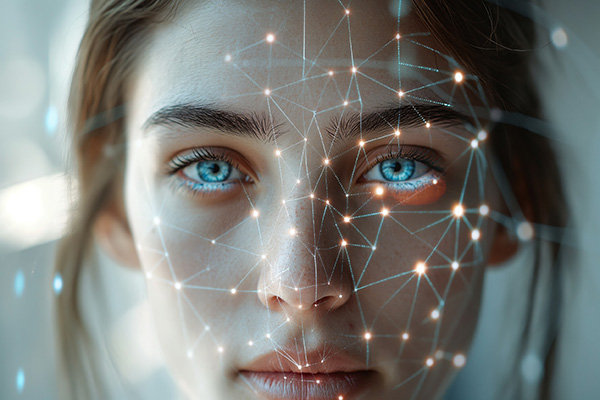The Advantages of Keeping a Dream Journal and Reasons to Begin
 Throughout my grandfather’s life, we engaged in numerous profound discussions regarding spirituality and existence beyond death. During several of those talks, he assured me that if there was a means for him to reach out from the other side posthumously, he would certainly find a way to do so.
Throughout my grandfather’s life, we engaged in numerous profound discussions regarding spirituality and existence beyond death. During several of those talks, he assured me that if there was a means for him to reach out from the other side posthumously, he would certainly find a way to do so.
He stayed true to his word and followed through with that promise. Our bond has remained unbroken since then, and he offers me guidance from another realm.
Though over twenty years have passed since his departure, I continue to have visitation dreams along with mediumistic encounters where he conveys messages to me. I feel immensely grateful for these experiences, and they have affirmed a lot of what I have always perceived about the afterlife and the spirit world.
Grandpa was among the rare individuals with whom I could freely share my psychic skills, mediumship, and supernatural events I experienced in my youth. He possessed a remarkably open mind and spiritual awareness that was uncommon for a person of his era and upbringing.
He not only believed steadfastly in the soul’s existence beyond this physical world, but he also had a genuine curiosity about the mystical and supernatural. I can vividly recall him recounting an out-of-body experience, describing how he viewed his physical form from above while he “floated.”
One of the essential teachings my grandfather imparted to me was regarding the spiritual importance of our dreams. He grew up in an era when dreams were losing their magical meaning in society, as scientists began analyzing the dream state primarily from psychological, biological, and neurological perspectives.
While scientists delved into dreams as mere brain functions, my grandfather retained the traditional, spiritual interpretation, viewing dreams as divine messages and a way to communicate with those who have passed. He firmly believed that dreams could forecast future events and provide direction for our life choices.
I have dreamt in my life, dreams that have stayed with me ever after, and changed my ideas; they have gone through and through me, like wine through water, and altered the colour of my mind ~ Emily Bronte
The wisdom and insights from my grandfather inspired me to start a dream journal at a young age. This spiritual practice has significantly impacted my life and journey in many wonderful ways.
Dream Journaling As A Spiritual Practice
I frequently urge my clients to begin documenting their dreams as a powerful method for personal insight and spiritual development. After years of maintaining a record of my dreams, I have obtained vast clarity and guidance. It has become one of the most vital tools in my spiritual repertoire.
By regularly reflecting on your dreams, you start noticing patterns, symbols, or even prophecies that have unfolded. Over time, you recognize your higher self and spirit interacting with you, offering wisdom and clarity through the dream experience. It also enables communication with cherished ones, whether from this life, previous existences, or future incarnations.
Your dreams carry significant messages that can help you navigate life’s twists and turns, so it’s important not to overlook their significance. Committing to the practice of dream journaling opens paths to deeper self-awareness and spiritual comprehension.
Here are some insights I’ve gathered regarding dreams and the act of dreaming:
– We can seek any information we desire within our dreams if we inquire.
– Dreams frequently caution us about upcoming events.
– Health revelations often emerge through dreams.
– Our diet influences the quality of our dreams.
– Our soul departs our body while we slumber.
– We astral travel to alternative dimensions and higher planes in our dreams.
– We often connect with deceased loved ones in our dreams.
– Dreams facilitate communication with those living in this reality.
– Insights from past lives can be accessed via dreams.
Your dreams are the seeds of your future successes. Don’t downgrade your dream just to fit your reality. Upgrade your conviction to match your destiny ~ KT Witten
How To Improve Your Dreamwork
If you feel as though you’re not dreaming or can’t recall your dreams, there are various techniques that can help you enhance your dreamwork. Here are several tips to improve your dream experiences and ensure you remember and fully utilize this incredible spiritual resource.
SET A CLEAR INTENTION
Prior to sleep, concentrate on a specific intention for your dreams, often referred to as “dream incubation.” Whether your aim is to connect with a loved one, seek insight into a health condition, or explore a spiritual inquiry, a distinct focus can steer your dream experiences towards meaningful results.
For instance, during a particularly challenging period in my life, I dreamt of sipping rose tea. At that time, I was unaware that rose tea could alleviate anxiety, but subsequent research confirmed that it was what I needed to soothe myself.
By intentionally focusing on a specific issue or desired insight as you drift off, you prompt your subconscious mind to work on that intention throughout your dreaming period. This approach can lead to significant insights into unresolved matters, foster connections with loved ones who have transitioned, or yield creative solutions to real-life challenges.
For effective dream incubation, you should articulate your intention clearly, perhaps by writing it down in your journal, vocalizing it in a bedtime prayer, or reciting it to yourself as a mantra. Upon waking, document all pertinent details in your dream journal and ponder how the dream correlates with the intention set the previous night. This process not only boosts the quality of your dreams but also fortifies your connection with spirit and inner guidance.
USE AN OLD SCHOOL JOURNAL
I strongly advocate for maintaining a traditional, hard-copy dream journal. Unlike digital devices, which can feel abrupt and disorienting first thing upon waking, a physical journal provides a more tactile and real connection to the mysteries of your dreams that digital formats cannot offer.
Writing down my dream notes by hand aids me in slowing down my thoughts, allowing for complete processing and reflection on my dream details. The action of physically turning the pages of your journal contributes a sense of continuity and history, making it simpler to observe patterns, recurring motifs, and key shifts in your dream experiences over time.
There’s something inherently rewarding and personal about holding a notebook filled with your handwritten thoughts and unconscious revelations, making it a more meaningful tool for exploring dreams.
BEST PRACTICE TIPS AND TRICKS
Create a calming sleep environment: A tranquil, cozy space can enhance the quality of your dreams. Consider using essential oils like lavender or calming sounds to promote relaxation before sleep.
Utilize the energy of moonstone: Moonstones are believed to improve dream recall and enhance the clarity of your dreams. Place a moonstone beneath your pillow to “reel in” vivid and unforgettable dream experiences.
Install a dreamcatcher: Position one above your bed to create a nurturing atmosphere and serve as a continuous reminder of your dream aspirations. A dreamcatcher, rooted in Native American culture, consists of a circular hoop with a woven net inside, adorned with feathers, beads, and other sacred items. Traditionally, a dreamcatcher serves to shield the sleeper from bad dreams and evil spirits while allowing beneficial dreams to pass and gently slide down the feathers to the sleeper below. On the contrary, unwanted dreams and nightmares are caught in the web, dissipating with the first light of day.
Disconnect from digital distractions: Modifying your digital habits can greatly improve your sleep quality and enhance your dreamwork. Start by limiting screen time at least 30 to 60 minutes before bed, as blue light from devices disrupts melatonin production, hindering your ability to fall asleep. Instead, establish a relaxing, tech-free nighttime routine that informs your mind and body it’s time to unwind, such as meditation, prayer, or gentle breathing exercises.
Brew some herbal tea: Certain herbal teas, like mugwort or chamomile, are known to enhance the vividness and recall of dreams. Try consuming them before bedtime to see if they improve your dream clarity.
Consider melatonin supplementation: Taking a safe melatonin supplement can enhance your dream experiences by supporting a more stable sleep cycle and encouraging deeper rest. Melatonin is a hormone naturally produced in the body, primarily by the pineal gland, regulating the sleep-wake cycle or circadian rhythm. However, it’s important to consult a healthcare professional before beginning melatonin supplementation, especially if you have preexisting health conditions or are on other medications.
Keep your dream journal accessible: Place your dream journal next to your bed to record your dreams immediately upon waking. Since dreams can fade rapidly, writing them down right away ensures you capture all the important details.
Review your dream entries regularly: Date each dream entry and revisit your past dreams frequently. This practice not only helps spot connections between past and present but also reveals how dreams may have guided or foretold certain life events. I do not recommend relying on a generic dream dictionary for interpretation. Instead, create your own, as dream symbols may carry unique meanings for each individual.
Document symbols and themes: Even for seemingly fragmented or incomplete dreams, write down everything you remember. Over time, you’ll identify patterns, themes, symbolic gestures, and recurring images that enrich your understanding of your dream experiences; formulate your own dictionary for these symbols to enhance dream interpretation and comprehension of their messages.
Reflect on your emotions: Dreams often hold the most significance when they elicit strong feelings. If you experience intense emotions within a dream, consider recent situations in your waking life that may relate and write about how these experiences intertwine.
Pay attention to the warnings: Dreams frequently carry cautionary messages. For me, nightmares sometimes indicate that my dietary choices need attention. Dreams of falling often suggest a need to regain control in some area of my life. If you’re grappling with a fear or unresolved issue, seek guidance through your dreams. You may uncover the root cause, perhaps even from a previous life, providing valuable insight into how to handle it.
|
Moon Goddess is a third-generation empathic healer and seer. She has been providing healing readings to individuals for over two decades. Her passion for and study of metaphysical subjects began early in her life. Highly sensitive, she can sense and visualize events before they materialize. Utilizing Tarot and support from her Guides, she serves as a source of encouragement for many diverse individuals globally. After his transition, her grandfather honored his commitment and returned to bid farewell, granting her an extraordinary experience. Moon recognizes that Heaven exists, and it is remarkable! Sharing her journey has provided comfort to many facing loss or experiencing grief. Schedule a reading with Moon Goddess now at PsychicAccess.com. |
Dreams have captivated humanity throughout history due to their enigmatic and often dreamlike quality. They have the capacity to whisk us away to alternate realities, introduce us to unfamiliar beings, and evoke various feelings. But have you ever pondered the advantages of maintaining a dream journal? Not only does it enhance your comprehension of your dreams, but it can also positively affect your overall well-being. If you’re intrigued by the idea of delving into your subconscious mind, here are some compelling reasons why you should begin dream journaling.
1. Enhanced Dream Recall:
Dreams are ephemeral, and it’s common to forget them shortly after awakening. However, consistently keeping a dream journal can train your brain to remember more of your dreams. By detailed logging of your dreams over time, you can bolster your ability to remember them. As you become more in tune with your dreams, you may be astonished at the volume of details you recall.
2. Self-Exploration and Personal Advancement:
Dreams provide insights into our subconscious minds. They frequently mirror our most profound wishes, anxieties, and unresolved issues. Analyzing your dreams allows you to gain valuable perceptions into your inner self. Dream journaling helps to reveal recurring motifs, symbols, and patterns, which can offer insights into your emotions, thoughts, and experiences. This reflection can facilitate personal growth and a deeper understanding of your identity.
3. Creative Problem Solving:
Dreams possess a unique ability to resolve dilemmas and stimulate creativity. Numerous groundbreaking inventions, scientific revelations, and artistic masterpieces have been inspired by dreams. By maintaining a dream journal, you can tap into this reservoir of creativity. Writing down your dreams immediately upon waking allows you to capture innovative ideas, fresh views, and original solutions that may have evaded you during your waking hours.
4. Release of Emotions and Decrease in Stress:
Dreams frequently act as a pressure release valve for our emotions. They are a means to help us process and come to terms with feelings, particularly those we might not fully recognize in our waking state. Documenting your dreams creates a secure environment to explore and articulate your emotions. This is especially beneficial for alleviating stress, as dream journaling enables the release of pent-up emotions and provides a sense of emotional cleansing.
5. Lucid Dreaming:
Lucid dreaming is the skill of gaining awareness that you are dreaming while still within the dream. It unveils a realm of possibilities where you can actively engage and shape your dreams. Dream journaling can aid you in identifying dream signs and cues that signify you are in a dream state. By becoming more conscious of your dreams, you elevate your chances of experiencing lucid dreams, which can be incredibly thrilling and empowering.
6. Enhanced Sleep Quality:
Dream journaling can positively influence your sleep quality. Establishing a consistent dream journaling routine signals to your mind that dreams are important to you. This can improve your dream recall and deepen your connection with your dreams. Consequently, you might discover an overall enhancement in your sleep quality, as your mind becomes more attuned to the dream state.
In summary, dream journaling serves as a potent tool for self-exploration, personal growth, and overall wellness. With the systematic recording and evaluation of your dreams, you can uncover the hidden messages from your subconscious mind, boost your problem-solving skills, alleviate stress, and even revel in the excitement of lucid dreaming. So why not grab a notebook and a pen and embark on a fascinating journey of self-exploration and growth through dream journaling? You may find that remarkable insights and adventures await you in the dream realm. Continue reading



